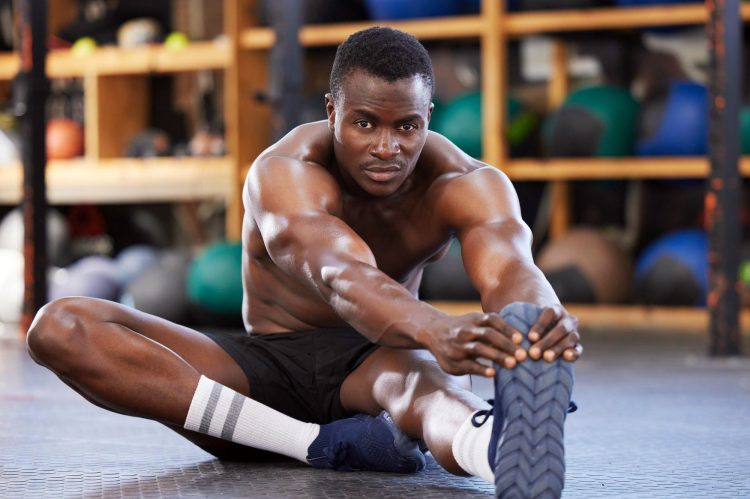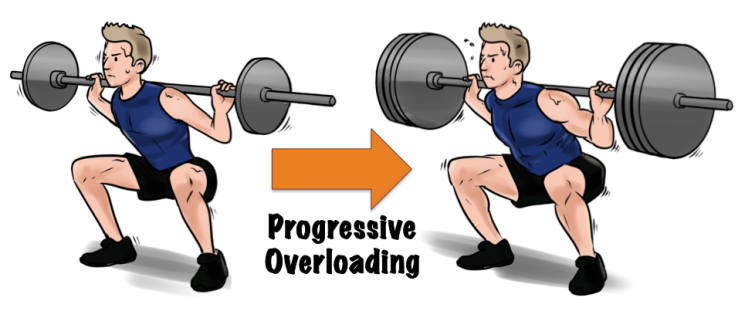Getting in great shape takes a lot of time and energy. Consequently, I hate to see anyone making common workout mistakes and wasting such valuable resources. These errors can put the brakes on your progress, leading to frustration and disappointment. Lack of progress is a leading cause of exercise drop-out (1).
As a veteran personal trainer with over 30 years of experience, I’ve made it my life’s mission to help people reach their training goals as quickly and efficiently as possible. Invariably, this means providing tried-and-tested training advice backed by the latest research and studies.
In this article, I reveal the eight most common workout mistakes that could be hurting your gains. Avoid these mistakes, and you’ll soon start to make the progress you deserve.
8 Workout Routine Mistakes Everyone Makes
Are you frustrated by your lack of training progress? There is a good chance you are making one or more of these common mistakes. Stop making these errors, and you’ll soon be back on the gains train!
1. Not Warming Up Properly
An effective workout starts with a thorough warm-up. Warming up prepares your muscles and joints for what you are about to do, potentially lowering your risk of injury.
Level Up Your Fitness: Join our 💪 strong community in Fitness Volt Newsletter. Get daily inspiration, expert-backed workouts, nutrition tips, the latest in strength sports, and the support you need to reach your goals. Subscribe for free!
However, a good warm-up should also fire up your nervous system so your body can function at its best. This will increase your strength so you can use heavier weights and do more reps, making your workout much more productive.
While it may be tempting to skip your warm-up, doing so is a serious mistake. Sure, you’ll save a few minutes. Still, the slower progress and potential risk of injury could end up costing you months of unproductive or missed workouts.
The length and structure of your warm-up depends on the type of workout you are about to do, but standard components include:
- Pulse raise – 5-10 minutes of light cardio
- Joint mobility exercises
- Dynamic flexibility exercises
- Rehearsal of the main workout activities
Solution: Put 10-15 minutes aside for warming up. Design a simple warm-up routine that you can bolt onto the front of any workout. Never skip your warm-up, and live by the mantra, “If you don’t have time to warm up, you don’t have time to work out.”
You can learn more about the importance of warming up in this in-depth guide.
2. Not Following A Program
Do you arrive at the gym with no clear plan for what you are going to do? You are not alone! A lot of lifters have no kind of program and make up their workouts on the spot. While this “instinctive” training method works for some, most people make better progress by following a well-designed training program.
A training program is like a map designed to lead you toward your destination. It lists the exercises, reps, sets, and weights you need to do, ensuring your workouts have structure. In summary, having a program gives you direction.
Training without a program is like going on a long journey without a map. Yes, you may eventually reach your destination, but it’ll probably take longer than it should, and you’ll likely get lost a bunch of times along the way.
There are lots of great programs to choose from, and you can also learn how to write your own or hire a trainer to do it for you. That said, please ensure that your workouts match your training experience and fitness goals. A lousy program can be as ineffectual as having no program at all.
Solution: Follow a workout program designed around your experience, needs, and goals. Think of this program as a blueprint for success.
3. It’s Always Chest and Biceps Day!
While it’s okay to have body parts or muscle groups that you enjoy training or want to prioritize, it’s essential not to neglect the rest of your body. For example, a lot of young male lifters want to build up their chest and arms, so that’s the focus of almost all their workouts.
Unfortunately, such an unbalanced approach can lead to a weird-looking physique that is neither functional nor aesthetically pleasing.
Instead, your workout should train all major muscles fairly evenly. And while it’s okay to have a favorite body part, that doesn’t mean you should neglect muscle groups you deem less important.
Nature abhors imbalance; for example, not training your legs or back can have an inhibitory effect on the rest of your body.
Solution: Train all major muscle groups evenly. For example, if you do three chest exercises, you should also do three back exercises. The same is true for your upper and lower body. A balanced program will usually produce better results than an unbalanced one.
Related: The Balanced Superset Workout
4. Ignoring the Need for Progression
Working out is a form of stress. Your body adapts to this stress by getting fitter and stronger. However, if you do the same workouts repeatedly, there is no stimulus for further adaptation, and your progress will grind to a juddering halt.
Many people make the mistake of doing the same exercises for the same reps and sets with the same reps for weeks or months at a time. With no increase in demands, your body has no reason to change, and progress will stall.
For example, if you always run the same distance or lift the same weights, that’s what your body will adapt to do. There is no compelling reason for it to get fitter or stronger if the stimulus remains unchanged. Therefore, if you want to continue getting fitter or stronger, your workouts must gradually get more demanding.
Level Up Your Fitness: Join our 💪 strong community in Fitness Volt Newsletter. Get daily inspiration, expert-backed workouts, nutrition tips, the latest in strength sports, and the support you need to reach your goals. Subscribe for free!
This is called progressive overload and is one of the most critical drivers of progress (2). So, while there is nothing wrong with loving your current training program, there is no need to marry it! Be ready to move on as soon as your workout stops producing gains.
Solution: Gradually increase the difficulty of your workouts to maintain your gains. Ways to do this include adding weight, doing more reps, taking shorter breaks between sets, doing more sets, changing exercises, or changing workouts. Even small increases in training intensity will ensure you continue making progress.
5. Not Caring About Exercise Technique
There are two ways to perform most exercises – the right way and the wrong way. The right way is effective and safe, whereas the wrong way is typically less effective and more likely to cause injury.
Needless to say, it’s a mistake to work out using incorrect form.
There are several reasons that people use poor exercise technique, including lifting too much weight and failing to realize the importance of good form. However, in my experience, ten well-performed reps will always produce better results than ten reps performed badly.
Using good form ensures you keep all the tension on the muscles you want to develop while minimizing joint stress. Poor form might let you lift more weight or pump out a few extra reps, but the extra work will probably fall on other parts of your body. In short, you’ll be working harder for no additional benefit.
Solution: Learn how to do the exercises in your workouts correctly. Video yourself or get feedback from a knowledgeable person if necessary. Do not sacrifice good form for more weight or reps. Check your ego at the gym door!
6. Sticking with the Same Program for Too Long
Even the most well-designed program will stop working eventually. It’s as if your body gets bored of doing the same exercises over and over. Initially, progress starts to slow, but ultimately, it’ll stop completely, resulting in what is often known as a training plateau.
Unfortunately, many exercisers stick with their program long past its use-by date. After all, it worked once, so it’ll start working again soon, right?
Sadly, doing more of the same won’t reignite your progress, and the only solution is a new workout plan.
Avoid the temptation of program hopping, where you switch workouts every week or two, which can be equally unproductive. However, if your progress is slowing or has actually stalled, you will probably benefit from a new training plan.
Solution: Monitor your progress and change your program if your gains start to slow down. Switch programs before you stall so your progress continues uninterrupted. Effective program duration varies from person to person, but expect to change your workout every 6-12 weeks. Avoid changing workouts too often, which can also hamper your progress.
7. Not Being Consistent
A program is only as good as your execution of it. In other words, even the best workout won’t produce the results you want if you don’t do it consistently. Ultimately, your body is pretty lazy and would prefer to stay skinny, weak, and unfit. Skipping more than a few workouts means your progress will be slow or even non-existent.
Ultimately, even a poorly designed program will produce results if you do it often enough. On the other hand, a great program won’t do much for you if you don’t do it regularly.
Solution: Do your utmost to avoid skipping workouts. Choose training programs you enjoy and that slot seamlessly into your lifestyle to remove common barriers to consistency. Repeat after me, “Consistency is king!”
Related: The Hierarchy of Successful Hypertrophy Training
8. Being A Stud in The Gym, But A Dud Out of It
Training is only part of the fitness success equation, and what you do outside of the gym is as important as your workouts. Many exercisers mistakenly ignore the importance of their lifestyle for building muscle, getting fit, and losing fat. Lack of attention to those undervalued details can severely undermine your progress.
Out-of-the-gym factors you must consider include:
- Sleep – try to get 7-9 hours per night.
- Diet – balanced, healthy, and aligned to your goals.
- Rest and recovery – make sure you put back into your body what training takes out.
- Stress – keep to a minimum to avoid undermining progress.
- Supplements – not essential, but can be helpful.
Solution: Never forget the “big picture” of how out of the gym factors can affect your progress. Pay as much attention to things like diet, sleep, and recovery as you do your workouts to ensure you get the most from your workouts.
Closing Thoughts
Look around any gym, and you’ll see people making mistakes that hold back their progress. In most cases, most of these folks don’t even realize what they’re doing is wrong.
Instead, they complain that their supplement stack isn’t working or that they’re hardgainers or exercise non-responders when, in fact, they’re self-sabotaging their progress by making easy-to-fix mistakes.
I’ve worked with dozens of clients who thought that they were doomed to being skinny, fat, or unfit. In almost every case, with the proper guidance, these people have gone on to achieve great things, often exceeding their wildest expectations.
So, audit your training and lifestyle to see if you are making any of these common mistakes. Then, put the solutions into action and take the brakes off your progress.
Train hard, smart, and consistently, and pay attention to what you do outside the gym. These are the ingredients to fitness success!
Next read: 5 Strength Training Mistakes Everyone Makes (And How to Avoid Them)
References:
- Gjestvang C, Abrahamsen F, Stensrud T, Haakstad LAH. Motives and barriers to initiation and sustained exercise adherence in a fitness club setting-A one-year follow-up study. Scand J Med Sci Sports. 2020 Sep;30(9):1796-1805. doi: 10.1111/sms.13736. Epub 2020 Jun 15. PMID: 32488898; PMCID: PMC7497044.
- Peterson MD, Pistilli E, Haff GG, Hoffman EP, Gordon PM. Progression of volume load and muscular adaptation during resistance exercise. Eur J Appl Physiol. 2011 Jun;111(6):1063-71. doi: 10.1007/s00421-010-1735-9. Epub 2010 Nov 27. PMID: 21113614; PMCID: PMC4215195.













